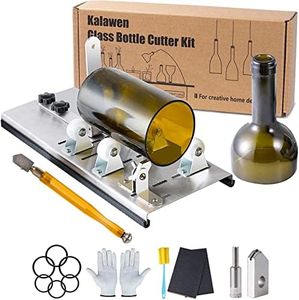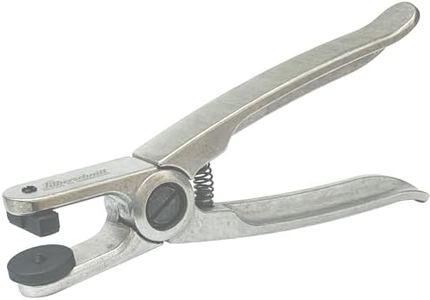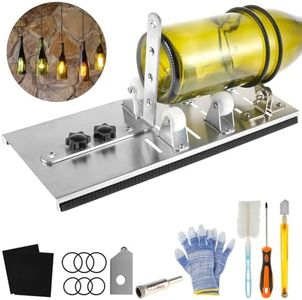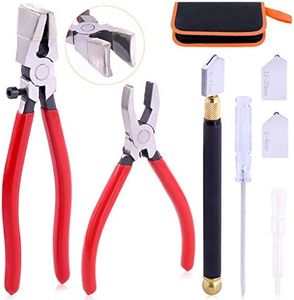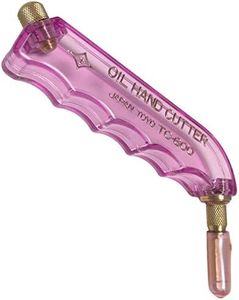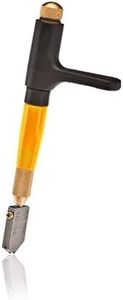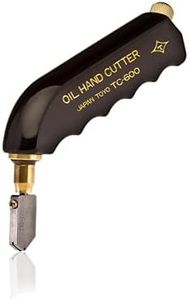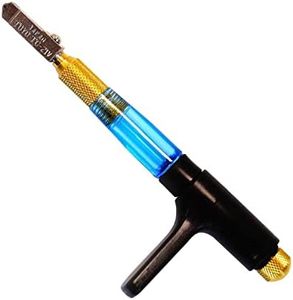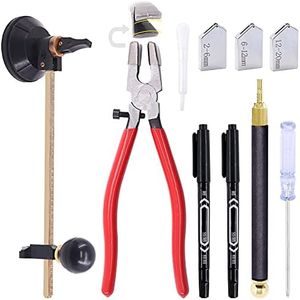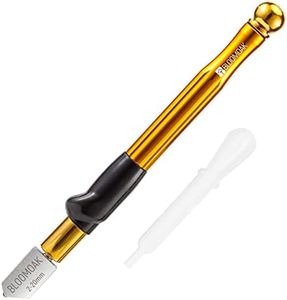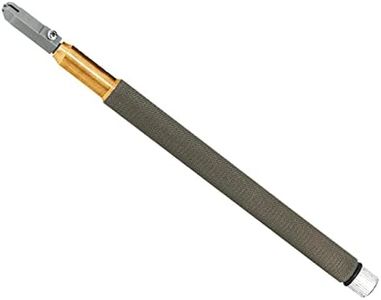We Use CookiesWe use cookies to enhance the security, performance,
functionality and for analytical and promotional activities. By continuing to browse this site you
are agreeing to our privacy policy
10 Best Glass Cutters
From leading brands and best sellers available on the web.By clicking on a link to a third party's website, log data is shared with that third party.
Buying Guide for the Best Glass Cutters
Choosing the best glass cutter depends on understanding the type of glass you plan to cut, how frequently you’ll use the tool, and your level of experience. The right glass cutter can make clean, precise cuts without causing unnecessary breakage or hand fatigue. Before making a purchase, consider the key features and how they match your needs so you can work with glass more safely and efficiently.Cutting Wheel MaterialThe cutting wheel is the part of the tool that actually scores the glass, and its material greatly affects performance and durability. Most glass cutters use hardened steel or tungsten carbide wheels. Steel wheels are common and generally suitable for occasional use or for cutting thinner glass. Tungsten carbide wheels are harder and last longer, making them ideal for frequent use or for cutting thicker, harder types of glass. Consider what kinds of glass you’ll be working with and how often; for hobbyists, steel may suffice, but for regular or heavier jobs, carbide is a better investment.
Handle Design and MaterialHandles can be made from plastic, metal, or wood, and come in different shapes such as pencil-style or pistol-grip. A comfortable handle ensures better control and reduces hand fatigue, which is especially important for longer projects. Pencil-style handles are slim and allow for precise, detailed work, while pistol-grip handles let you apply more pressure and may be easier to use if you have less hand strength. Try to choose a handle that feels comfortable in your hand and suits the way you plan to work with glass.
Oil Feed OptionSome glass cutters come with an oil reservoir that automatically lubricates the cutting wheel. Oil helps the wheel move more smoothly, makes cleaner score lines, and extends the life of your tool. If you plan to cut a lot of glass or thicker, harder varieties, an oil-fed cutter can make your work easier and neater. For occasional or light work, a standard, non-oil-fed cutter may work just fine.
Cutting Wheel AngleThe angle of the cutting wheel affects how deep and precise the score line is. Common angles range from 120° to 154°. Smaller angles (like 120°) create finer, shallow scores suited for thin glass, while larger angles (around 154°) produce deeper, stronger scores for thicker or harder glass. Pick a wheel angle that matches the typical thickness of the glass you’ll be cutting most often.
Replacement Parts AvailabilitySince the cutting wheel wears down over time, being able to replace it, or any other part, ensures your tool stays effective. Check whether replacements are available and easy to swap. If you plan on using your cutter often, convenient access to spare cutting wheels and parts will keep your tool working longer and save money in the long run.
